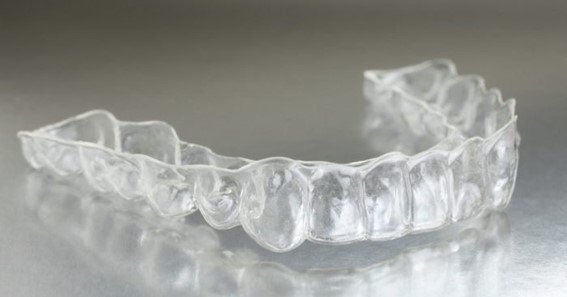Invisalign is a teeth-straightening option for people who don’t want to or can’t wear braces. There are several factors to consider before knowing if Invisalign is right for you.
What is Invisalign?
Invisalign is an orthodontic treatment that uses clear, plastic aligners to gradually straighten teeth. Unlike traditional braces, Invisalign aligners are virtually invisible, so most people won’t even know you’re wearing them.
Aligners are custom-made specifically for each person. You change your aligners every 2 weeks as your teeth gradually shift. The entire treatment process usually takes between 9 and 18 months, though this can vary depending on the individual case.
Invisalign is an effective way to improve your smile’s appearance. It can also help with more practical concerns such as brushing and flossing your teeth. If you’re seeking orthodontic treatment, Invisalign is worth considering as an alternative to traditional braces.
click here – 5 Examples Of Workplace Toxicity And Tips To Cope
How is Invisalign 3D Printed?
Invisalign uses 3D printing technology.
First, your Invisalign provider takes an impression of your teeth and uses that information to create a detailed 3D model. Invisalign then utilizes its proprietary software to design your unique treatment plan.
Once your provider finalizes your treatment plan, Invisalign uses its 3D printing technology to create your Invisalign clear aligners. Each of your aligners is slightly different and designed to move your teeth a little bit at a time until you achieve the final results.
A team of experienced orthodontists oversees the entire process. They make sure your treatment plan is on track to provide the best possible results.
Digital Scanning
One of the things that makes Invisalign so popular is that it utilizes digital scanning and 3D printing technology to create custom-fit aligners for each wearer. This makes treatment more comfortable and efficient than traditional braces.
To begin treatment, your Invisalign provider takes digital scans of your teeth. They use those scans to create a 3D model of your teeth.
From there, your provider uses the model to design a customized treatment plan for you. This plan maps out exactly how your teeth need to move to achieve your desired results.
click here – Canara Robeco Emerging Equities Fund Direct-Growth
Digital Treatment Planning
Invisalign treatment planning is a digital process that uses 3D imaging and digital models to map out the entire treatment. This allows the Invisalign system to create a series of clear, custom-made aligners designed to slowly move your teeth into their proper positions.
The Invisalign brand system is constantly being updated with new technology. This means your treatment plan can be easily customized to fit your individual needs.
3D Printing
The digital scan your Invisalign provider takes uses cutting-edge technology to create a 3D model of your teeth. They then use this model to design your custom aligners, which are printed with a 3D printer.
There are several benefits of Invisalign’s 3D printing technology.
First, it allows for a much more accurate fit than traditional aligners. This means the aligners are less likely to cause discomfort or irritation.
3D printing technology allows for a quicker turnaround time, as the manufacturing process is much faster than traditional methods.
Clear Aligner Fabrication
Invisalign makes its clear aligners with a proprietary material called SmartTrack. It gently and gradually moves your teeth into their desired position. The aligners are also custom-made for each person, based on 3D-imaging technology.
This ensures the aligners fit snugly and comfortably over teeth, enhancing the wearer’s experience.
Invisalign vs. Braces: Which Technology is Better?
Invisalign is a great option for people who do not want braces. However, this doesn’t mean it is the right option for everyone.
In general, Invisalign aligners are more expensive than braces. However, several people who have used Invisalign aligners believe the results are worth the extra cost.
Invisalign is also much less visible than braces. This can be important for adults who are self-conscious about their appearance. Some people also experience a faster turnaround than they would with braces, depending on the degree of correction needed.
Braces are more likely to cause pain and discomfort than Invisalign. They’re also more difficult to keep clean. Braces trap food and plaque in the brackets and wires.
So, which technology is better when it comes to orthodontics and correcting problems?
It depends on your individual needs and preferences. People looking for a more affordable option might prefer braces. However, if you’re willing to pay more for invisible teeth straightening, Invisalign may be the better choice.
(1) “Invisalign Clear Aligners | Invisalign.” Invisalign.com, 2019.
(2) What Is 3D Printing? | 3D Printing. 3dprint.duke.edu/what-is-3d-printing.
(3) Dodziuk, Helena. “Applications of 3D Printing in Healthcare.” Polish Journal of Cardio-Thoracic Surgery, vol. 13, no. 3, 2016, pp. 283–293, www.ncbi.nlm.nih.gov/pmc/articles/PMC5071603/#!po=21.3235, 10.5114/kitp.2016.62625.
(4) Center for Devices and Radiological Health. “3D Printers Are Used to Manufacture a Variety of Medical Devices.” U.S. Food and Drug Administration, 2019.
(5) Sivakumar, Andamuthu, et al. “Treatment Planning in Conservative Dentistry.” Journal of Pharmacy and Bioallied Sciences, vol. 4, no. 6, 2012, p. 406, 10.4103/0975-7406.100305.
(6) “Are You Too Old for Braces?” Harvard Health, 11 Aug. 2009.

